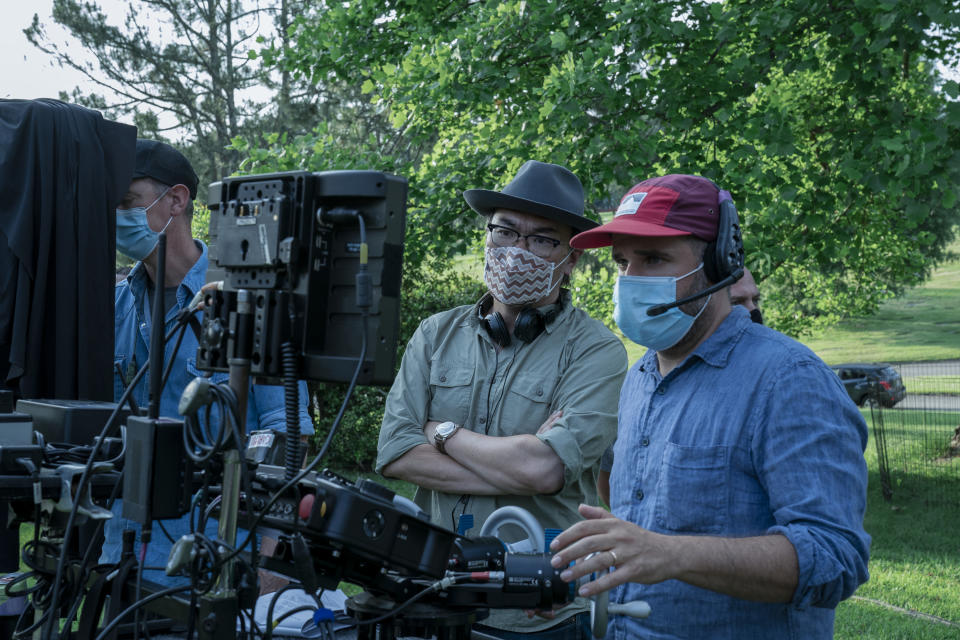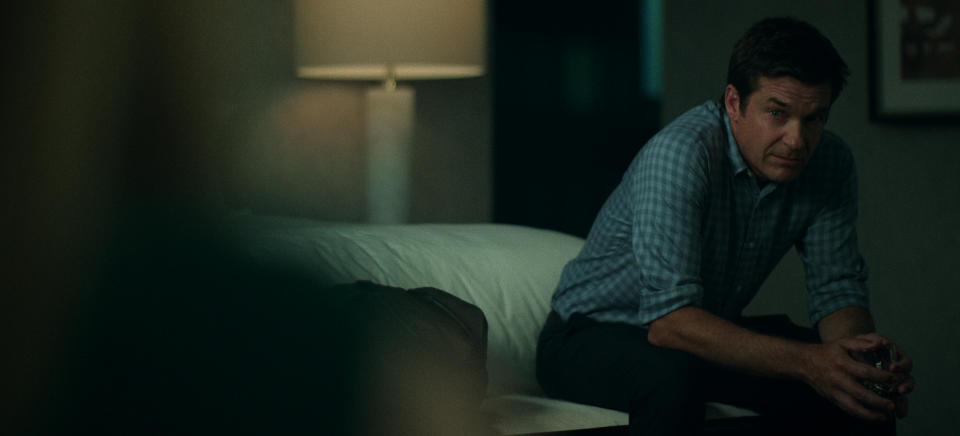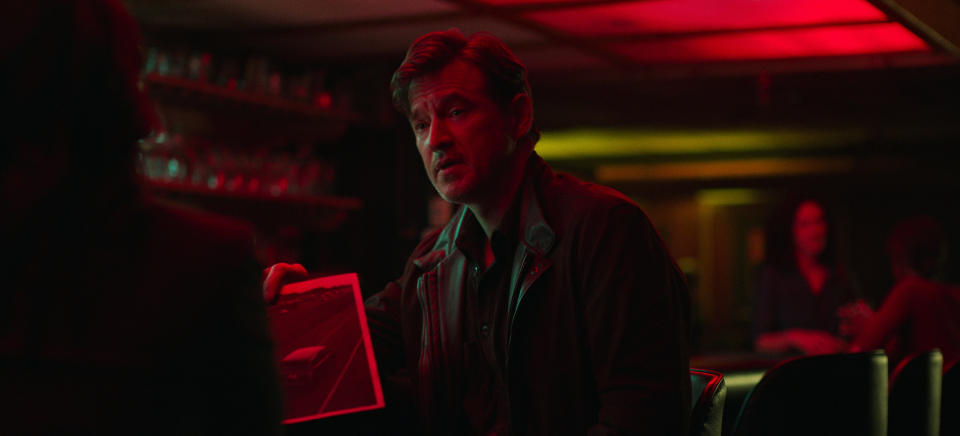How ‘Ozark’ Cinematography Put a ‘Sense of Danger in the Shadows’ for Season 4
- Oops!Something went wrong.Please try again later.
- Oops!Something went wrong.Please try again later.

“Ozark” cinematographer Shawn Kim came aboard the show at the start of Season 4 with a good idea of what creators Bill Dubuque and Mark Williams wanted for the look of the dark thriller about a mob accountant and his family who relocate from Chicago to the Missouri Ozarks: A “sense of danger in the shadows,” Kim says.
“Ozark” fans have been waiting three months for the second half of the season to find out what happens to the Byrdes — Jason Bateman’s Marty, wife Wendy (Laura Linney) and their two children — as they try to wriggle free from the clutches of the drug cartel that employs him and the FBI that wants to imprison him. But Kim says the final seven installments, which drops April 29 and close out the Netflix series, are built around the ambitious Ruth (Julia Garner), who had worked for Marty and saw her world collapse around her at the end of the first half of the season.
More from Variety
How 'Our Flag Means Death' Designers Mixed History With Broad Theatricality
Nielsen Streaming Top 10: 'Moon Knight' Debut Misses 'Hawkeye' Target
For instance, in the new batch of episodes, a high-angle shot — “something we almost never do on Ozark” — uses a diopter filter to create a minimal depth of field. “This lets the audience into a more intimate space than they are used to on the show,” Kim says, capturing the sense that something is “fundamentally starting to take hold in Ruth’s character.” They used a 30-degree tilt to kill out any background, “just focused on three eyelashes. I know we had a hypercritical field of focus before, but we really took it down, to, like, an F1, P-stop of 1, wide open, middle of the day. Having backgrounds fall off a bit more, and then, oddly, having a deep focus shot, to create the psychological effect, which was the claustrophobia of part A.” But, in part B, as the Byrdes’ narrative becomes clearer, some of the shots sharpen. “When we started opening up the background, as you’ll see in part two, there’s a little bit more in focus, overall,” he explains.
Yet Kim notes that the camera team also added a depth and heaviness to the remaining episodes to reflect the “weird things that happen” as the Byrdes’ decisions become more complex. “In terms of light, it’s mostly about denser shadows, elevated contrast — a bit more noir,” he says. “When composing our frames, my A-camera operator, Ari Issler, and I would always be looking for opportunities to use negative space to convey a sense of isolation and entrapment.”
A key element of “Ozark” is the overall effect of everything being so dark, even on bright, sunny days. Kim says, to achieve this, especially filming in a hot, bright Georgia summer, you literally have to blot out the sun. “It is the combination of taking out as much sun as you can physically, with flags and giant, forty-by-forty-foot black sails, putting up with contours and cranes,” to achieve the desired look. “This season, you’re starting to see more of the world but our characters become more in shadow so that even on a bright sunny day outside, we find a way to put them in shadow. And then we introduce a little bit in there, balance it up a little bit to get a little bit of an edge to it so it’s not so stark, dark foreground and bright backgrounds. We expose the background, and then bring the levels of the foreground scene, where all the dialogue and action is taking place, bring that down, and then build it back up. It’s kind of crazy.”
Kim says it was important to, “dimensionalize it a little bit, so that you are in the foreground and then you sculpt a light so that we always had a light coming from certain directions. We always have a psychological plan of the scene, and, hopefully, that translates to the viewer.”
They also aimed to put the audience at an objective disadvantage. “We employed a low-angle prism that allows the lens to scrape the floor from an extremely low angle,” Kim says. We would turn [the camera] sideways and scrape across walls. The intent is to convey a sense that the viewer is almost stuck to the floor or wall and dragged into the scene. It’s all about subtly shifting the viewer’s perspective.”
With this being the final season, Kim says there was an impetus to add a kind of visual exclamation point. Customarily, the world of “Ozark” has a rich cyan-filtered look to it, “almost monochromatic,” he says. But over the last episodes, the tint included some magenta — the opposite of cyan. Kim admits to seeing some shocked faces on set. “If it was a continuing season, I wouldn’t necessarily be as bold,” he explains, “but knowing [the show is] coming to an end, I felt it important to have a little bit of punctuation.”
The DP adds that Linney asked for a handheld camera in a scene that serves as an emotional culmination for both her and Bateman’s characters. “People are going to flip out,” Kim says. “I couldn’t believe it when I saw this is the first thing she’s ever done [as a director]. “Unbelievable natural talent.”
Best of Variety
Molly Shannon's Memoir 'Hello Molly' Is Already an Instant Bestseller on Amazon
2022 Primetime Emmys Awards Season Calendar: The Governors Balls are Back After Two Years
Sign up for Variety’s Newsletter. For the latest news, follow us on Facebook, Twitter, and Instagram.




